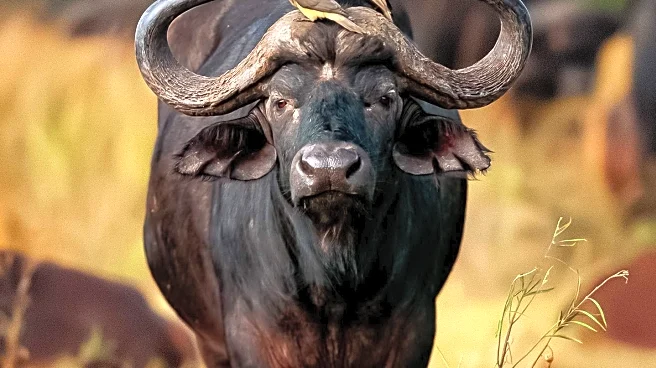Rapid Read • 8 min read
In Fort Collins, Colorado, residents have reported sightings of rabbits with unusual growths resembling tentacles or horns on their heads. Colorado Parks and Wildlife (CPW) has identified the cause as a virus that leads to wart-like protrusions on the rabbits' faces or heads. These growths are similar to benign cancerous cells and have no known cure. Despite their alarming appearance, CPW assures that the condition is not dangerous to humans or pets. Wildlife officials have advised the public to avoid approaching or touching these rabbits, as the virus can spread between rabbits but is not contagious to humans, dogs, or other wildlife.
AD
The discovery of this virus affecting rabbits in Colorado highlights the importance of monitoring wildlife health and understanding zoonotic diseases. While the virus is not a threat to public health, it underscores the need for public awareness and caution when encountering wildlife with unusual symptoms. This situation also emphasizes the role of wildlife agencies in managing and communicating potential health risks associated with animal populations. The presence of such a virus could impact local ecosystems, as it may affect rabbit populations and their interactions with other species.
Wildlife officials will likely continue to monitor the situation to assess the spread and impact of the virus on rabbit populations. Public education campaigns may be initiated to inform residents about the virus and appropriate precautions. Further research could be conducted to understand the virus's long-term effects on rabbits and potential implications for other wildlife. Collaboration with veterinary and wildlife health experts may be necessary to explore treatment options or preventive measures.
The emergence of this virus in rabbits may prompt discussions on wildlife conservation and the importance of biodiversity. It raises questions about how environmental changes and human activities might influence the spread of diseases among wildlife. Additionally, it could lead to increased interest in studying wildlife diseases and their potential crossover to domestic animals or humans, even if currently deemed non-threatening.
AD
More Stories You Might Enjoy












